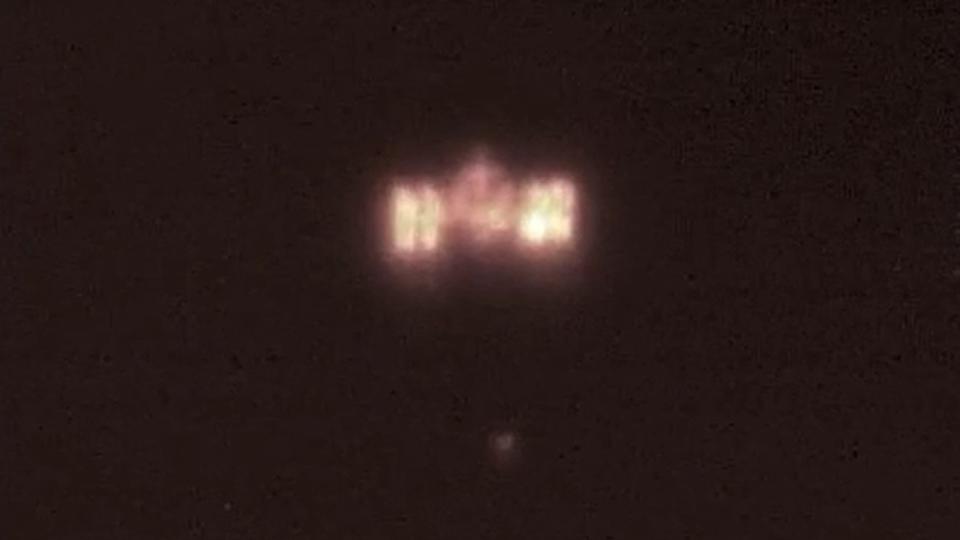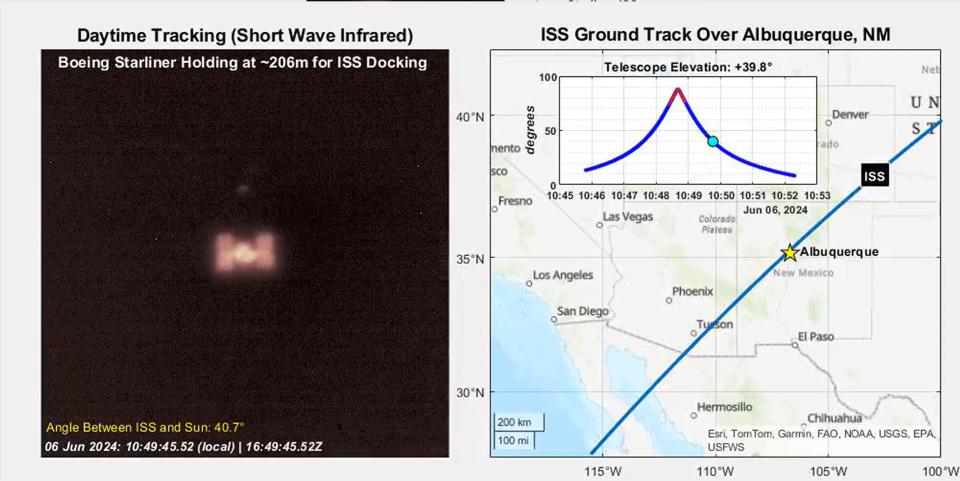Earth-based telescope sees Boeing's Starliner approach the ISS in broad daylight (photo)
When you buy through links on our articles, Future and its syndication partners may earn a commission.

Telescopes scanning the skies during the day watched as Boeing's first crewed Starliner spacecraft approached the International Space Station.
Boeing's CST-100 Starliner arrived at the space station on June 6, marking the first astronaut mission with the spacecraft. The spacecraft docked with the forward port on the station's Harmony module after a touch-and-go approach during which Starliner encountered several thruster issues.
Boeing's Laser & Electro-Optical Systems team captured an amazing view of Starliner during its approach of the space station using the company's advanced daytime satellite tracking technology based in Albuquerque, New Mexico. The system combines a large aperture telescope and short-wave infrared sensor to image satellites in orbit during the day, along with a specialized computer-controlled mount to compensate for the Earth's rotation.
"This high-profile event enabled us to demonstrate the value of daytime satellite tracking to a broader audience," Ron Dauk, Laser & Electro-Optical Systems manager and Albuquerque site leader, said in a statement from Boeing News Now.
"Our capability uses mostly commercial-off-the-shelf hardware modified with Boeing's radiometric, sensor and inertial navigation technology — resulting in a simple, affordable design that delivers exceptional performance."

Generally, ground-based observations are limited to a short period before sunrise and after sunset, given sunlight during the day overloads the telescope sensors. However, Boeing says daytime satellite tracking will enable around-the-clock monitoring, which offers heightened awareness of the skies, enhanced early warning capabilities, improved communication and coordination and more accurate intelligence via real-time threat monitoring, according to the statement.
The Laser & Electro-Optical Systems uses proprietary software to predict the orbital path of satellites and captures imagery during the day using short-wave infrared sensors that reject blue light emitted by the sun that would otherwise make the spacecraft difficult to detect. Image processing is then applied to enhance the quality, allowing satellites to shine through.
RELATED STORIES:
— Boeing's 1st Starliner to carry astronauts arrives at ISS despite thruster malfunction
— When will Starliner come home? Boeing and NASA still don't know
— This telescope can observe stars, satellites and more during the day. But how?
"Satellite observation is key not only to monitoring activity in orbit, but also technologies like satellite laser communication," Dale Parkes, system architect and Boeing Technical Fellow, said in the statement.
"Our team takes pride in developing novel solutions to our customers' most pressing challenges. We believe that this capability will unlock new opportunities and applications for ground-based tracking systems."
Veteran NASA astronauts Barry "Butch" Wilmore and Suni Williams traveled to the space station aboard the Boeing Starliner capsule for what was initially supposed to be a 10-day mission. They have since been reassigned to performing maintenance tasks on the orbiting lab while they await confirmation on their planned return flight back to Earth.

